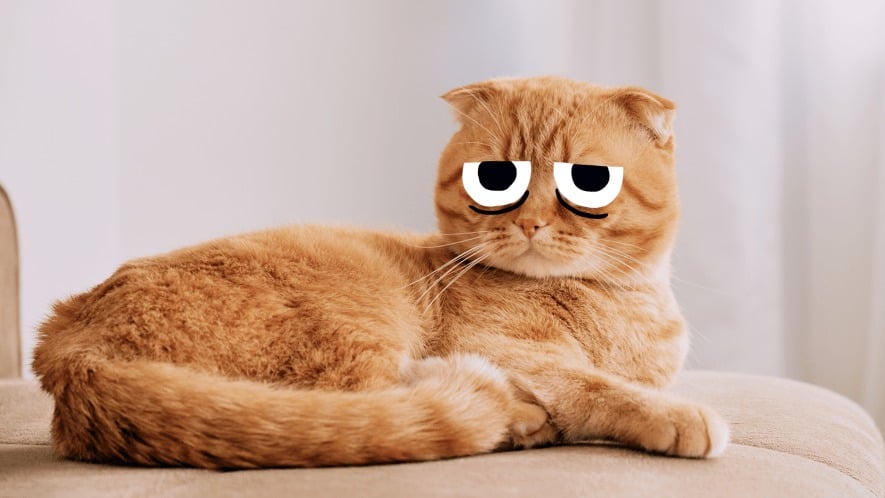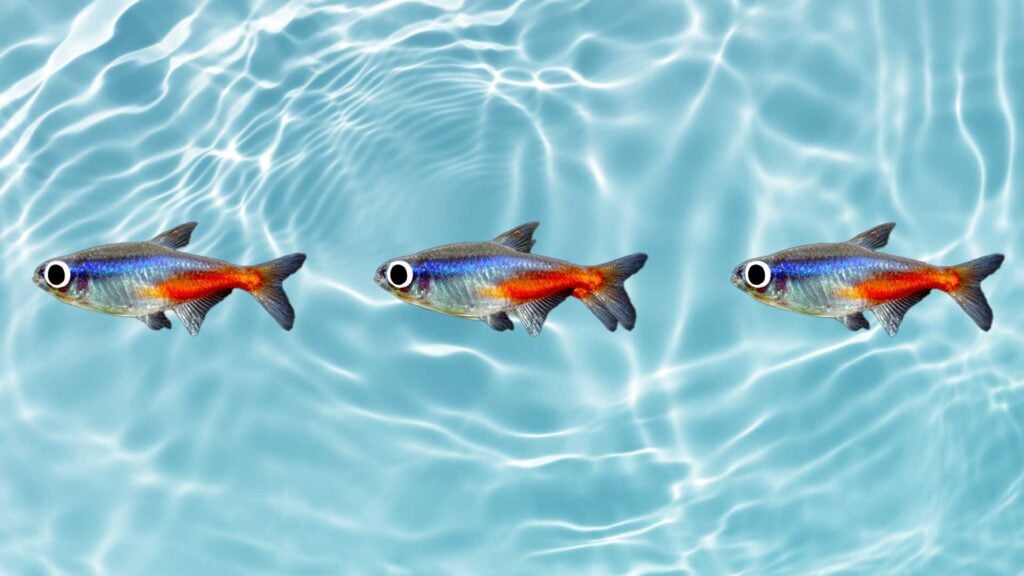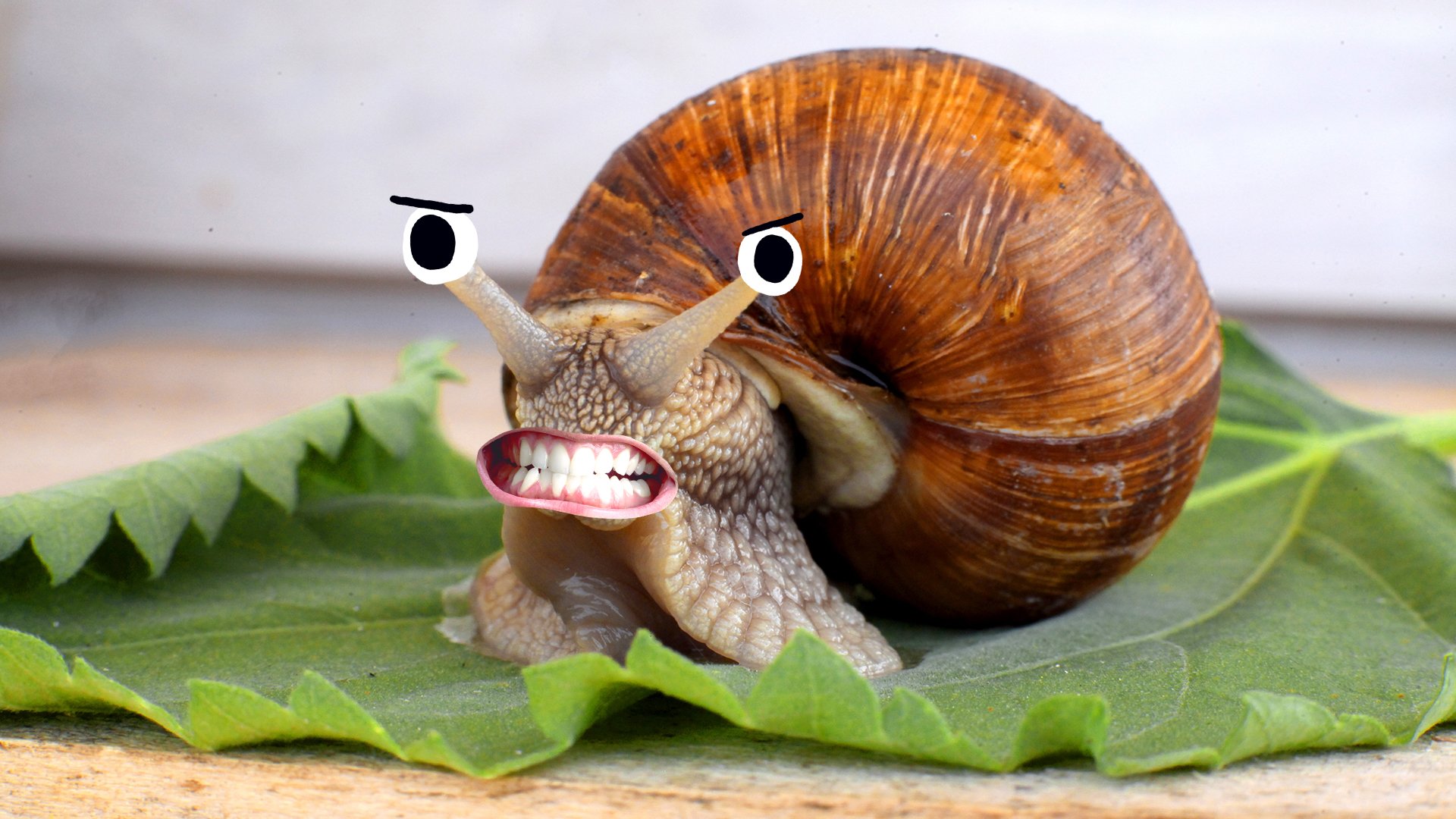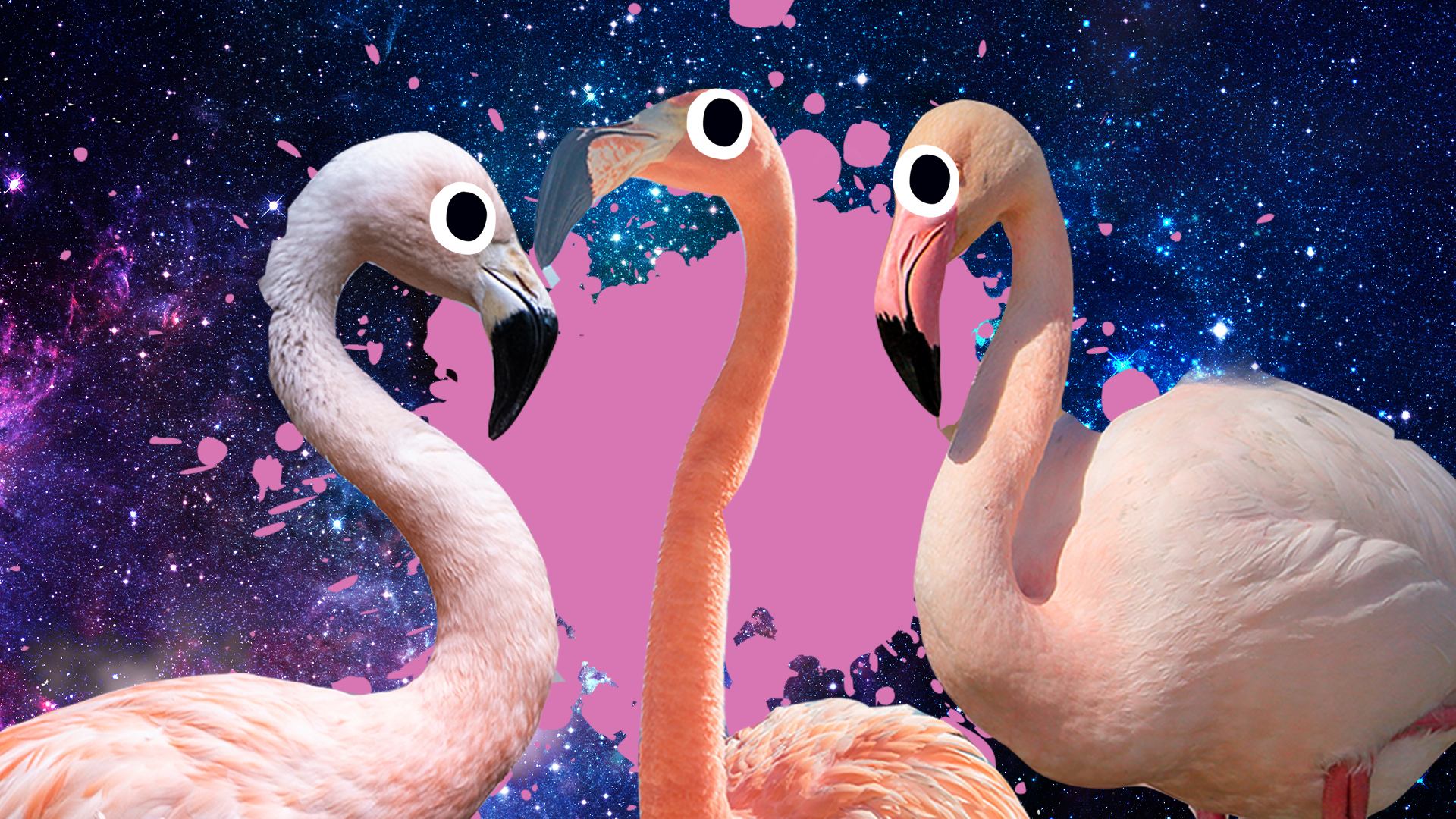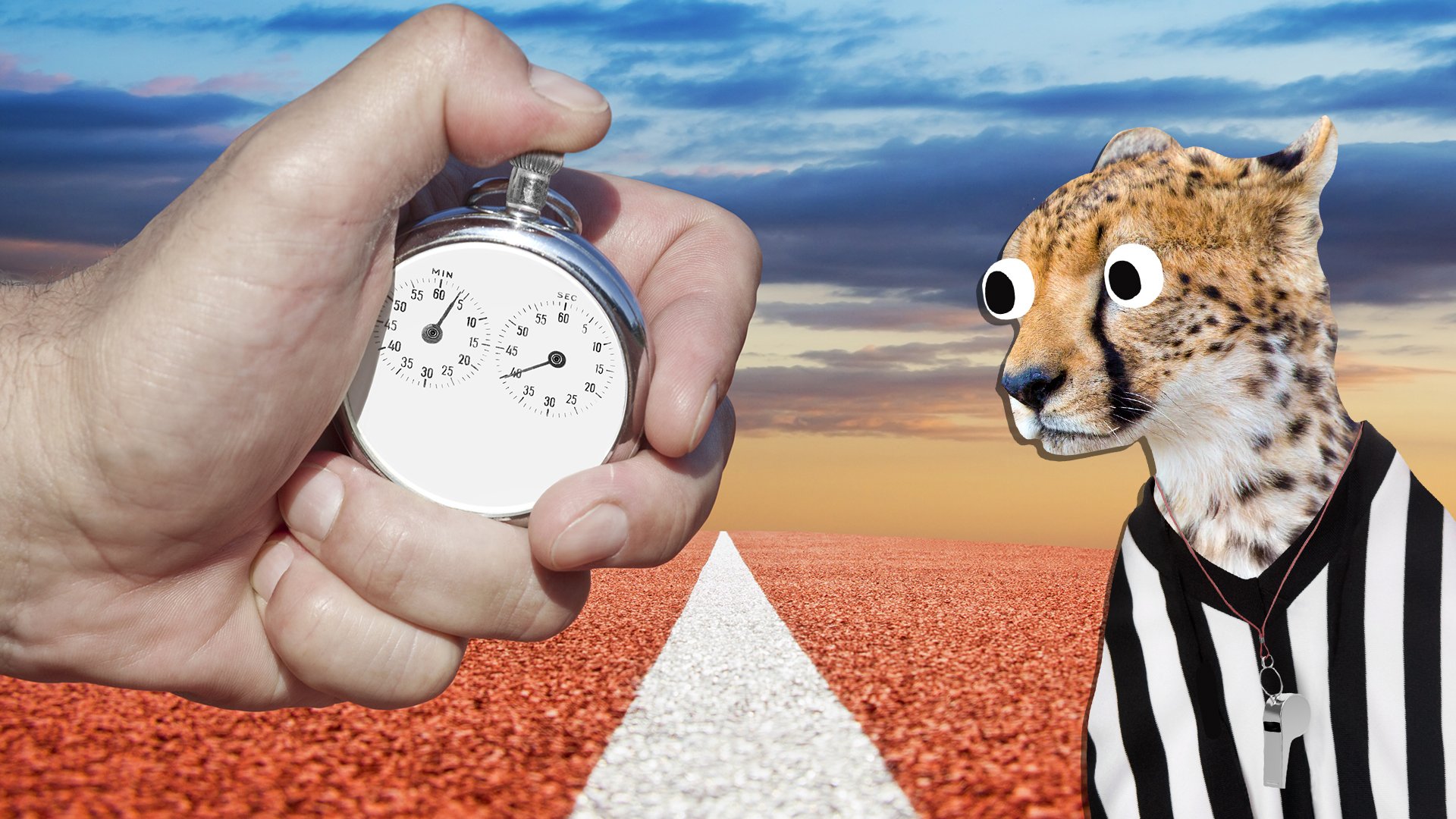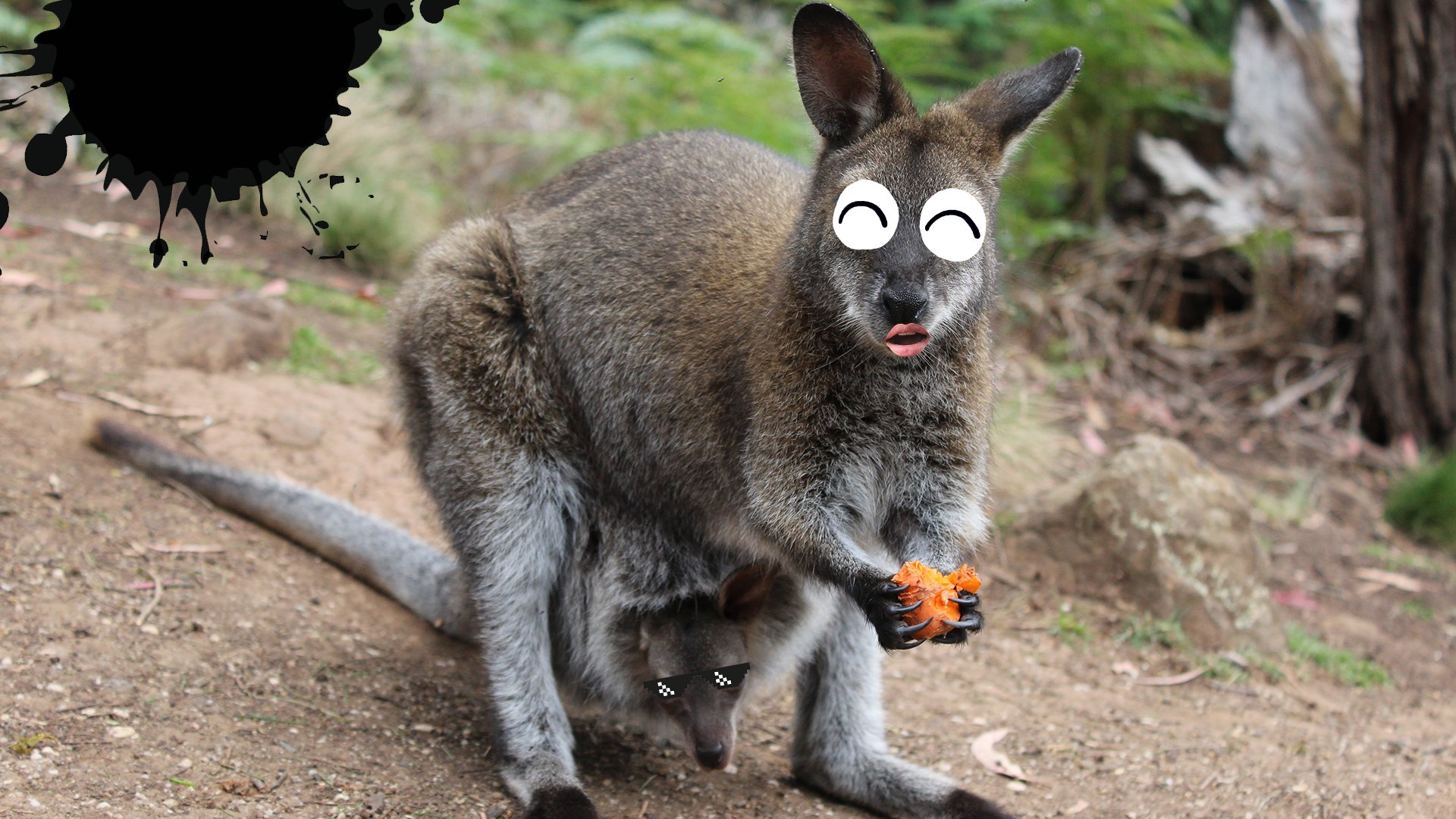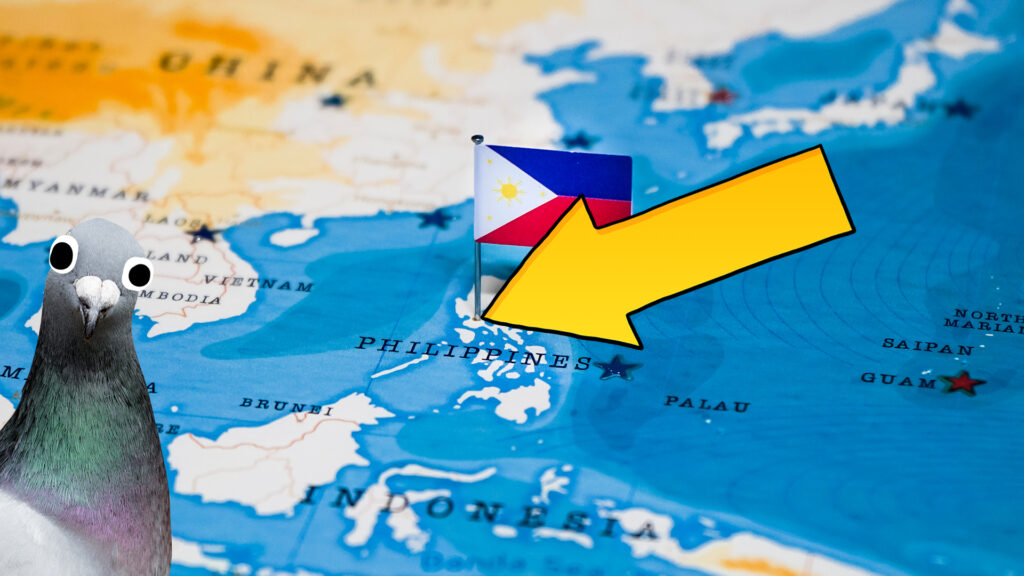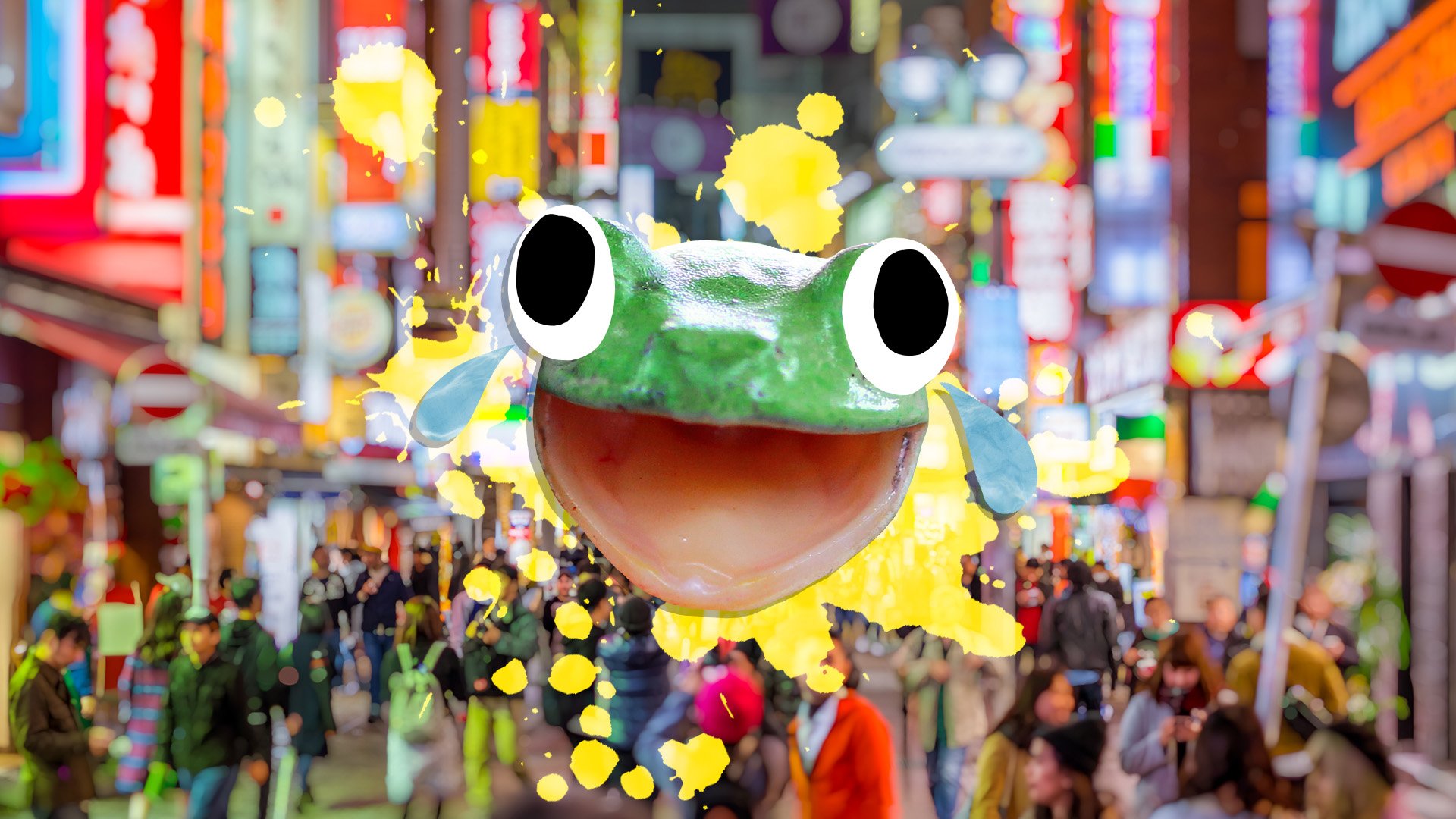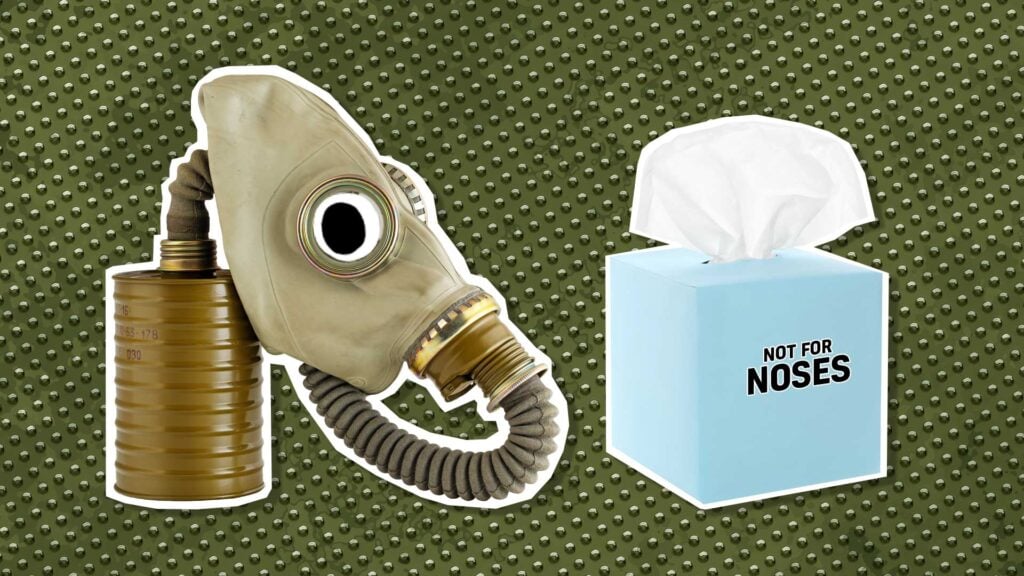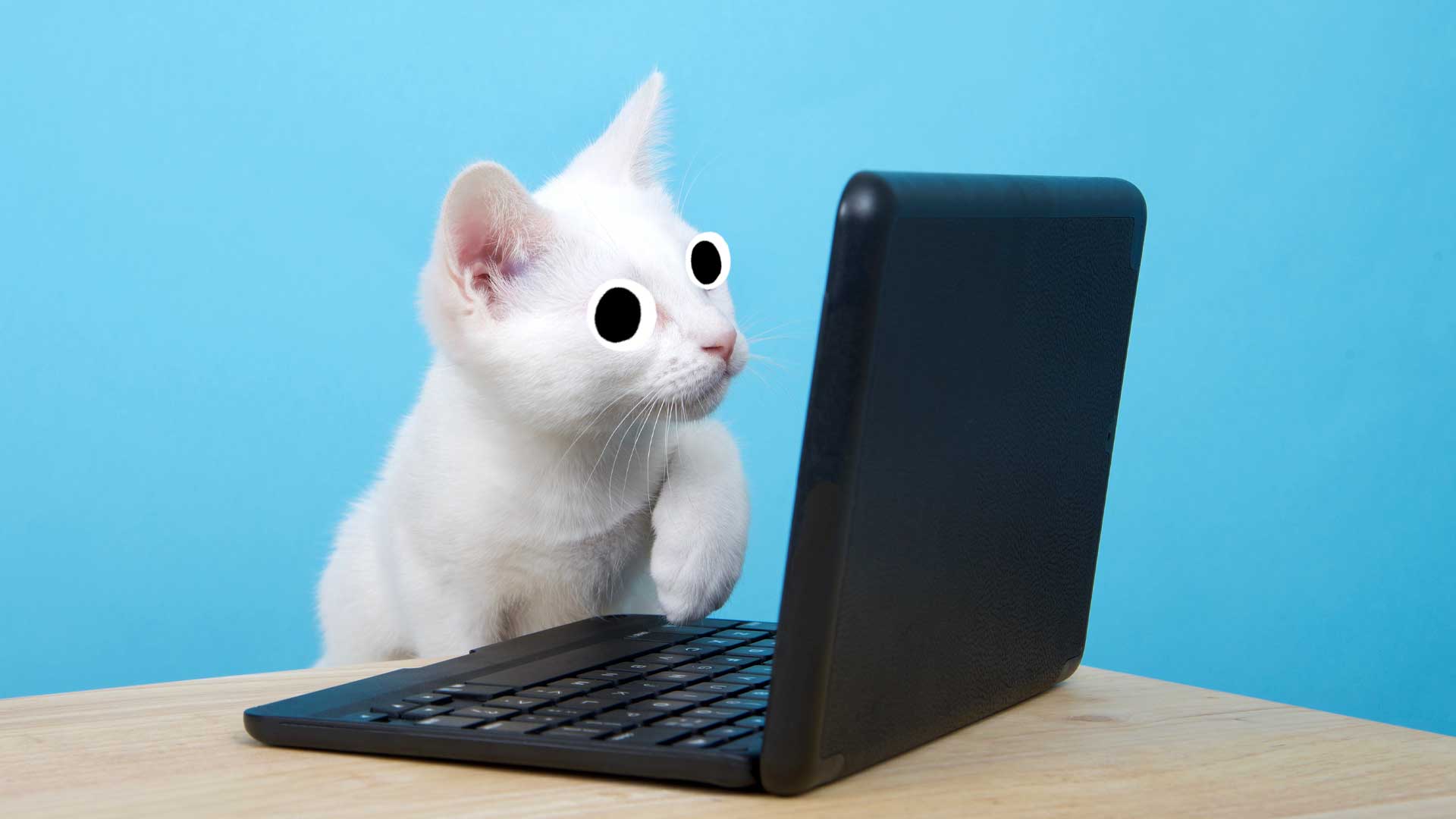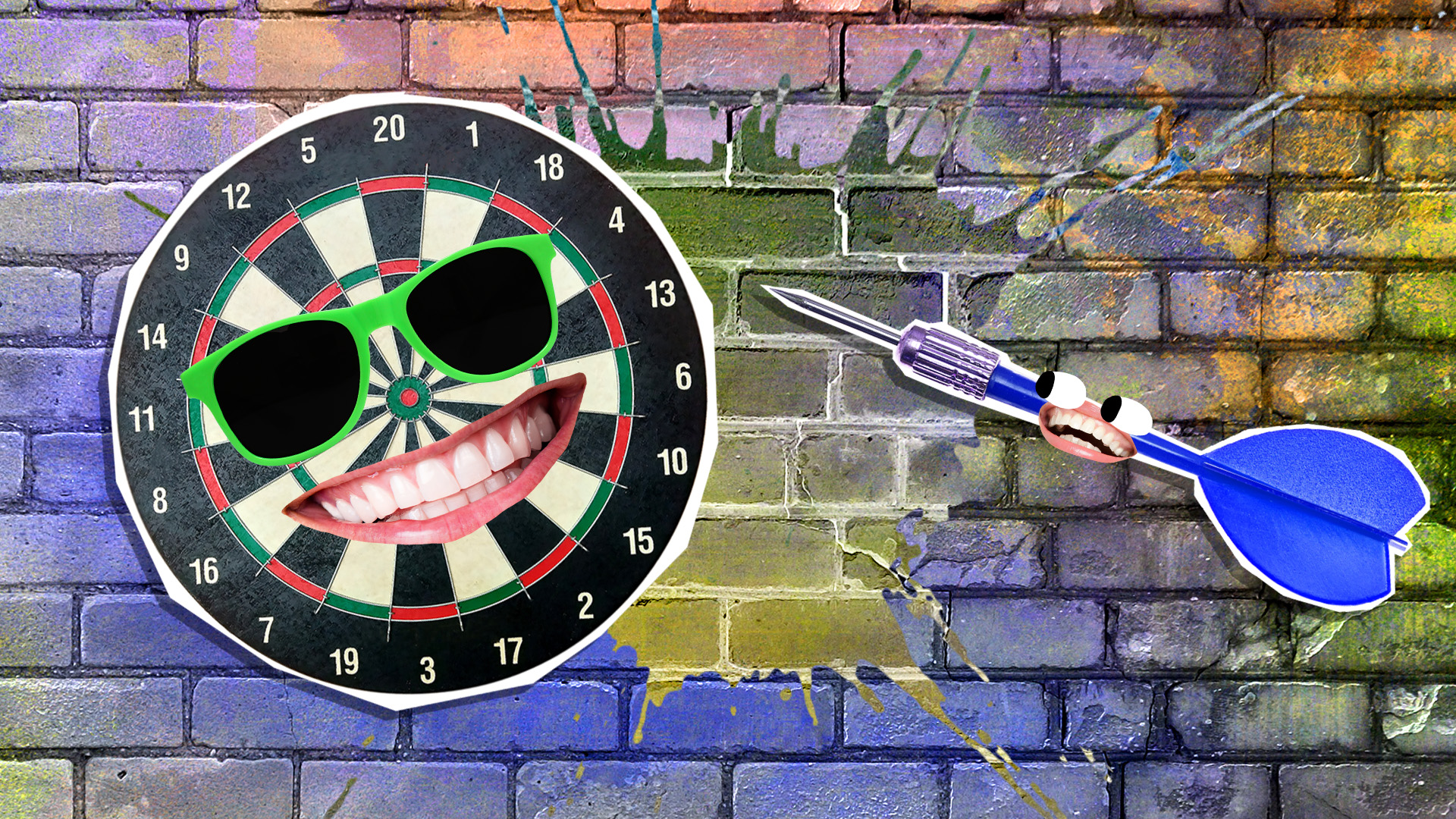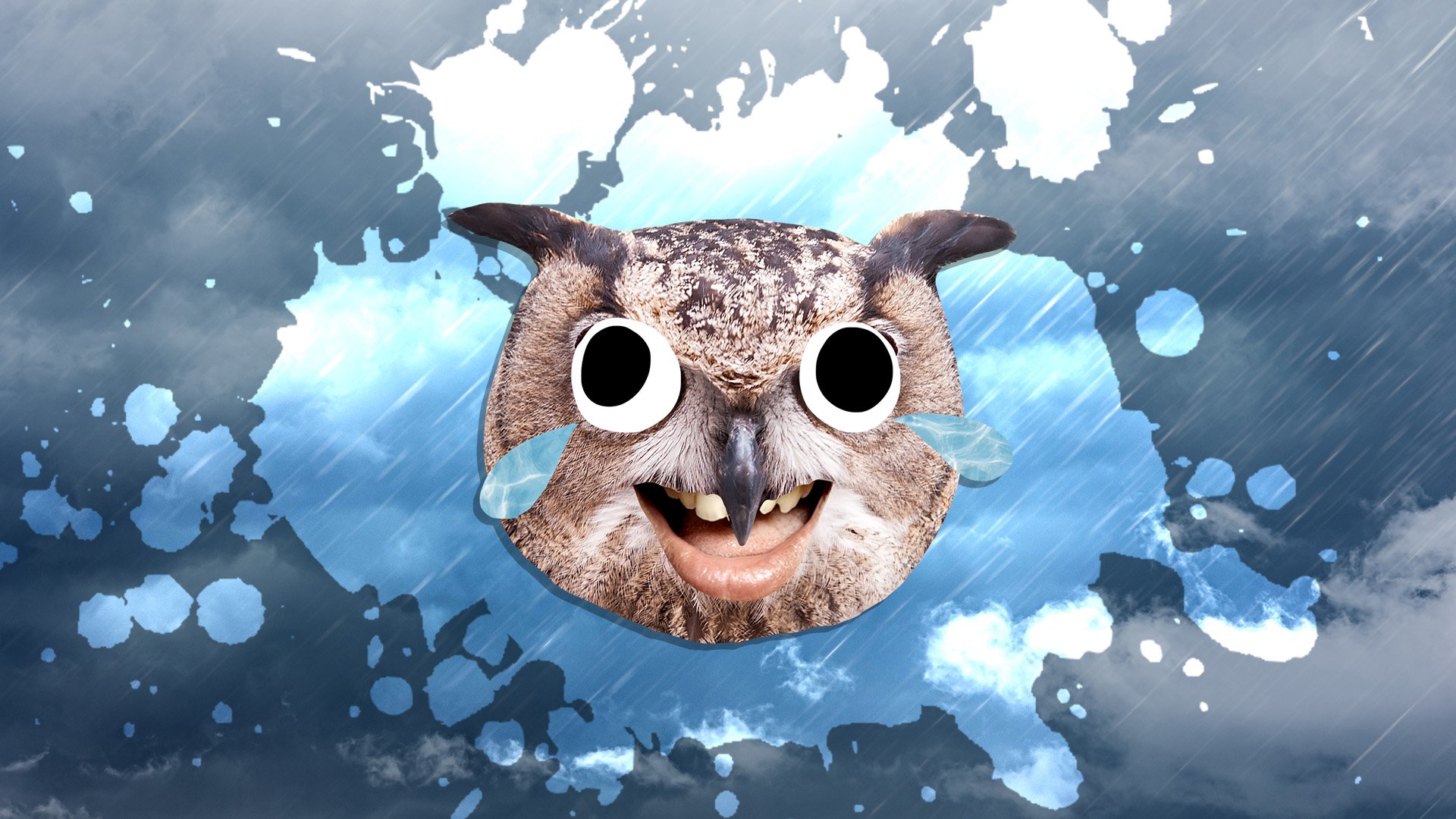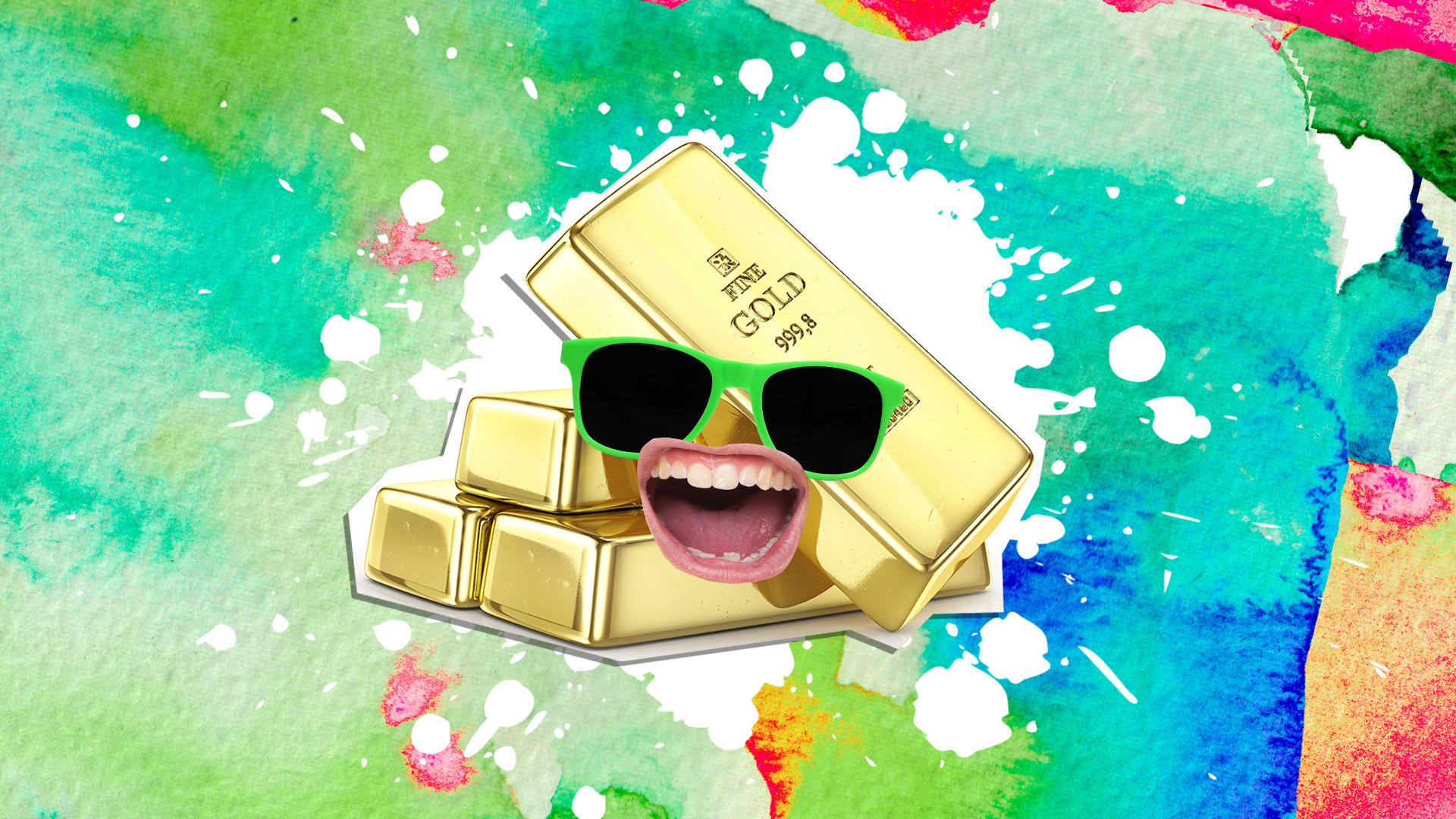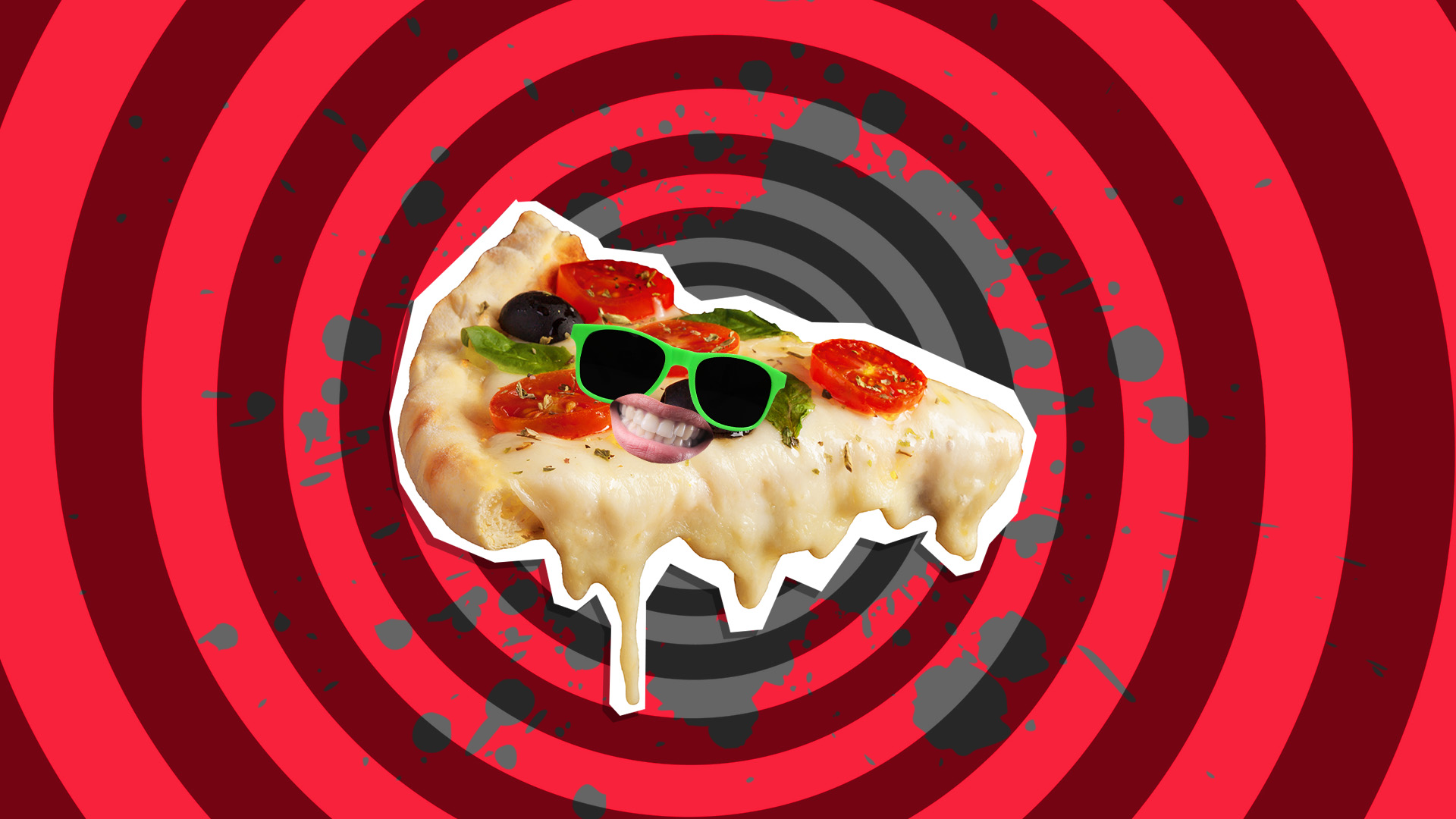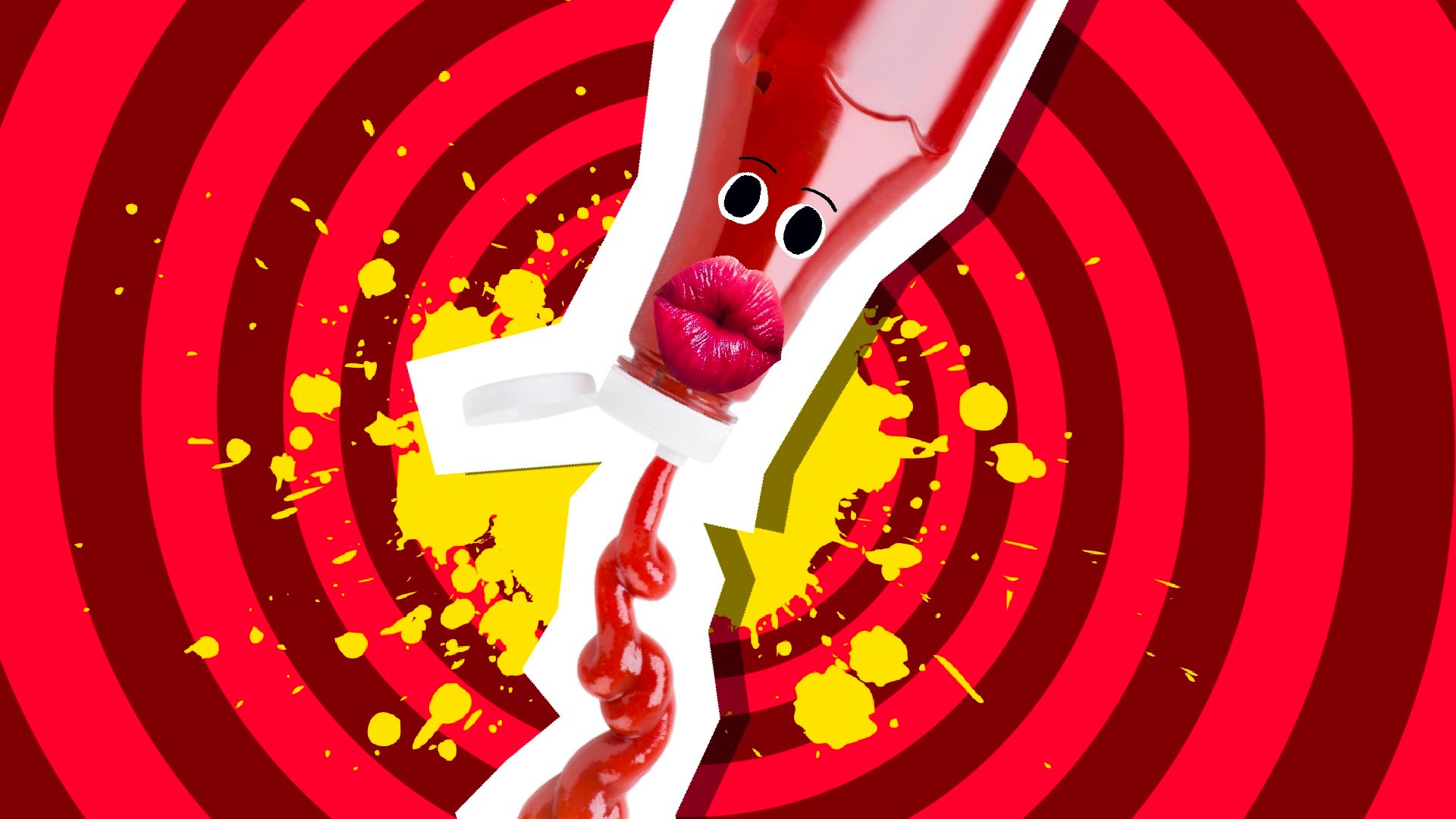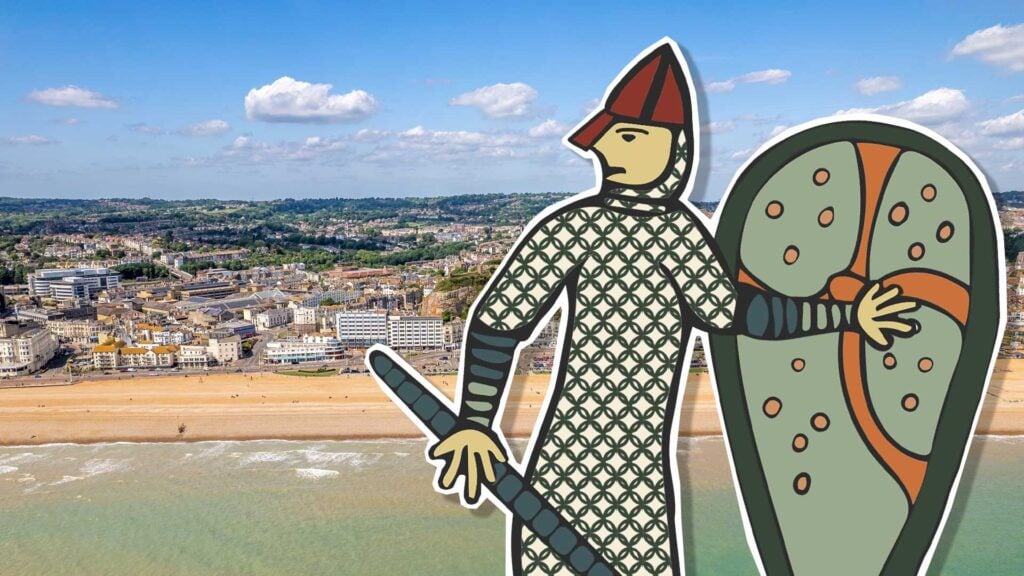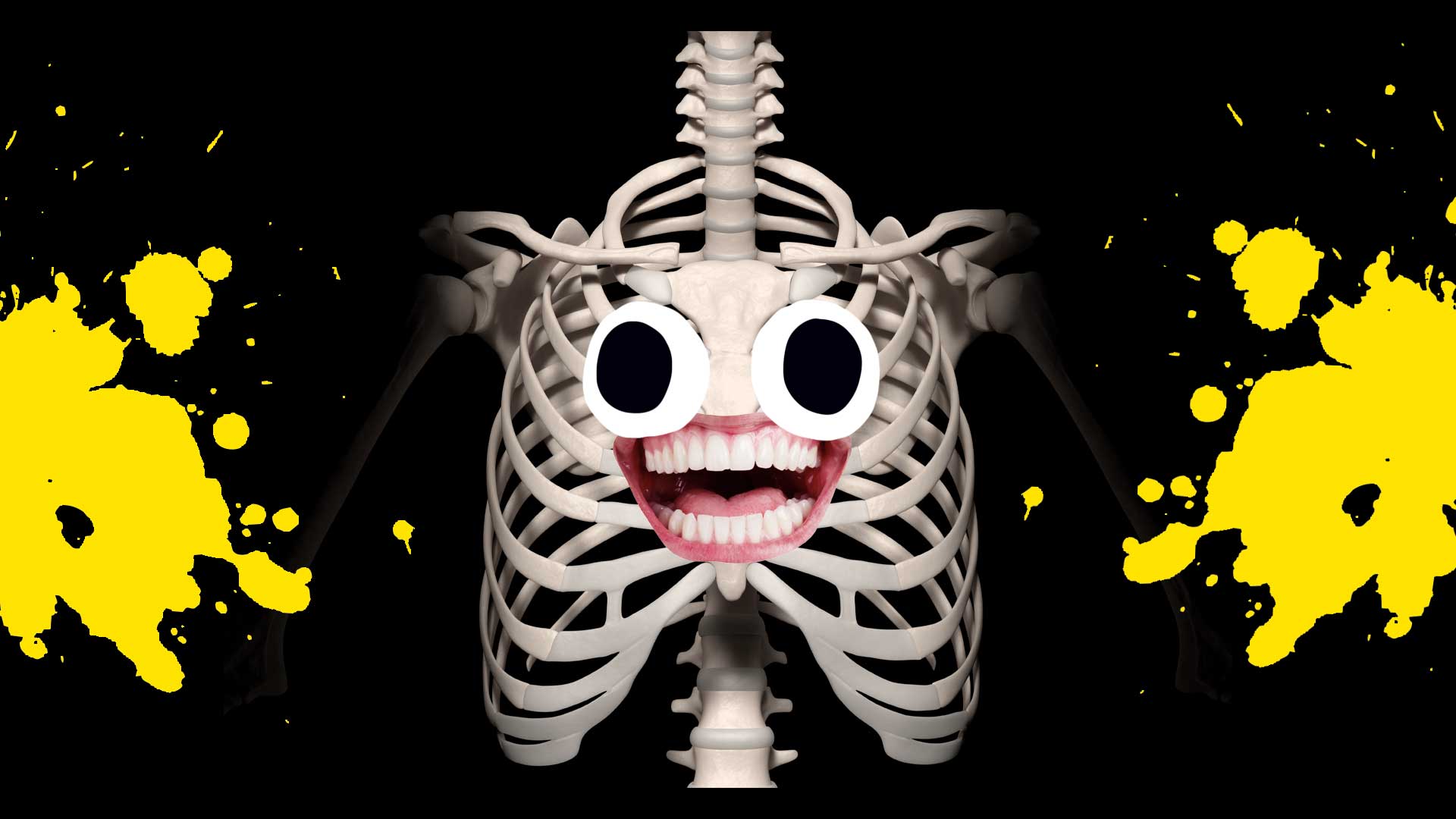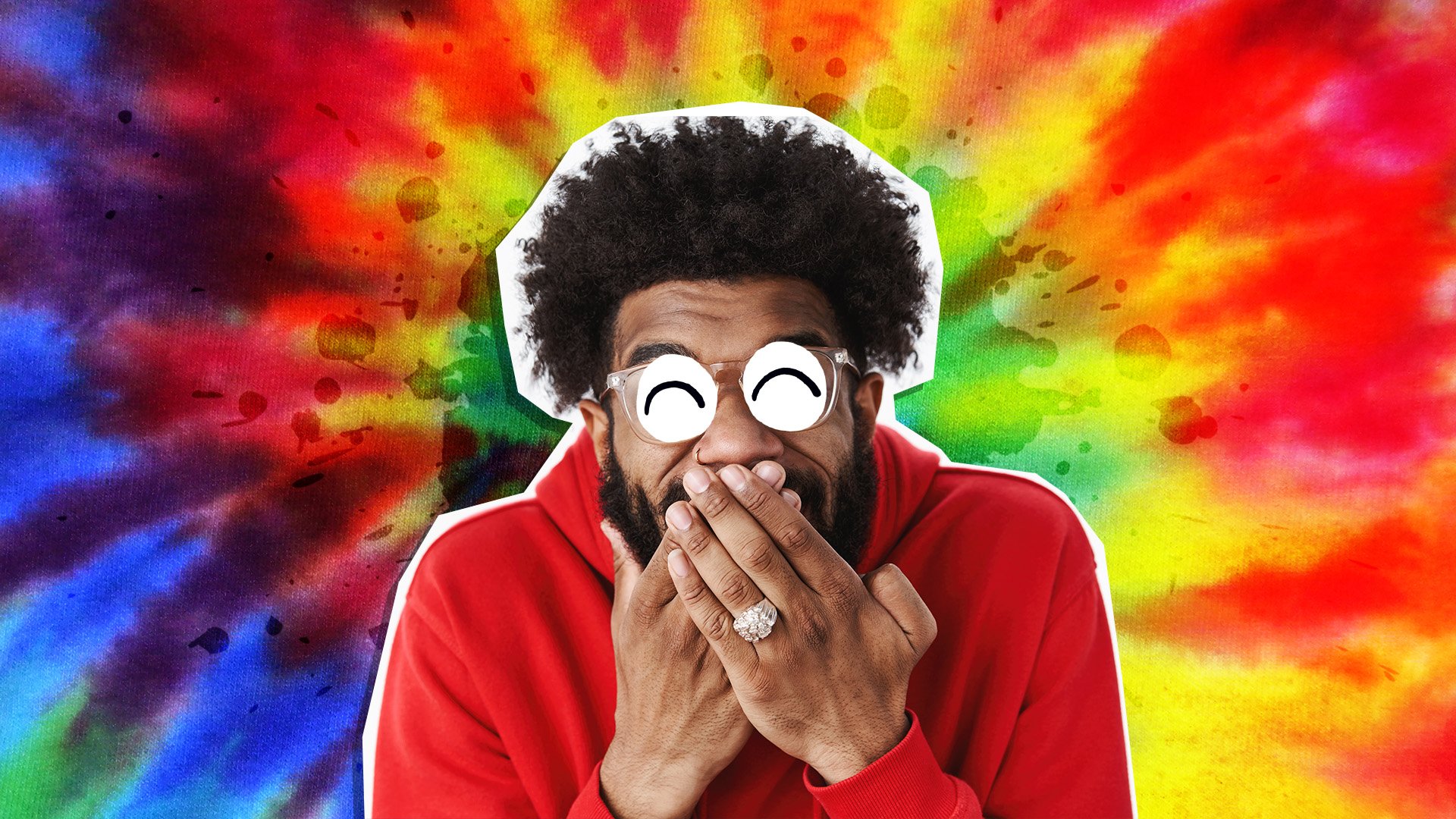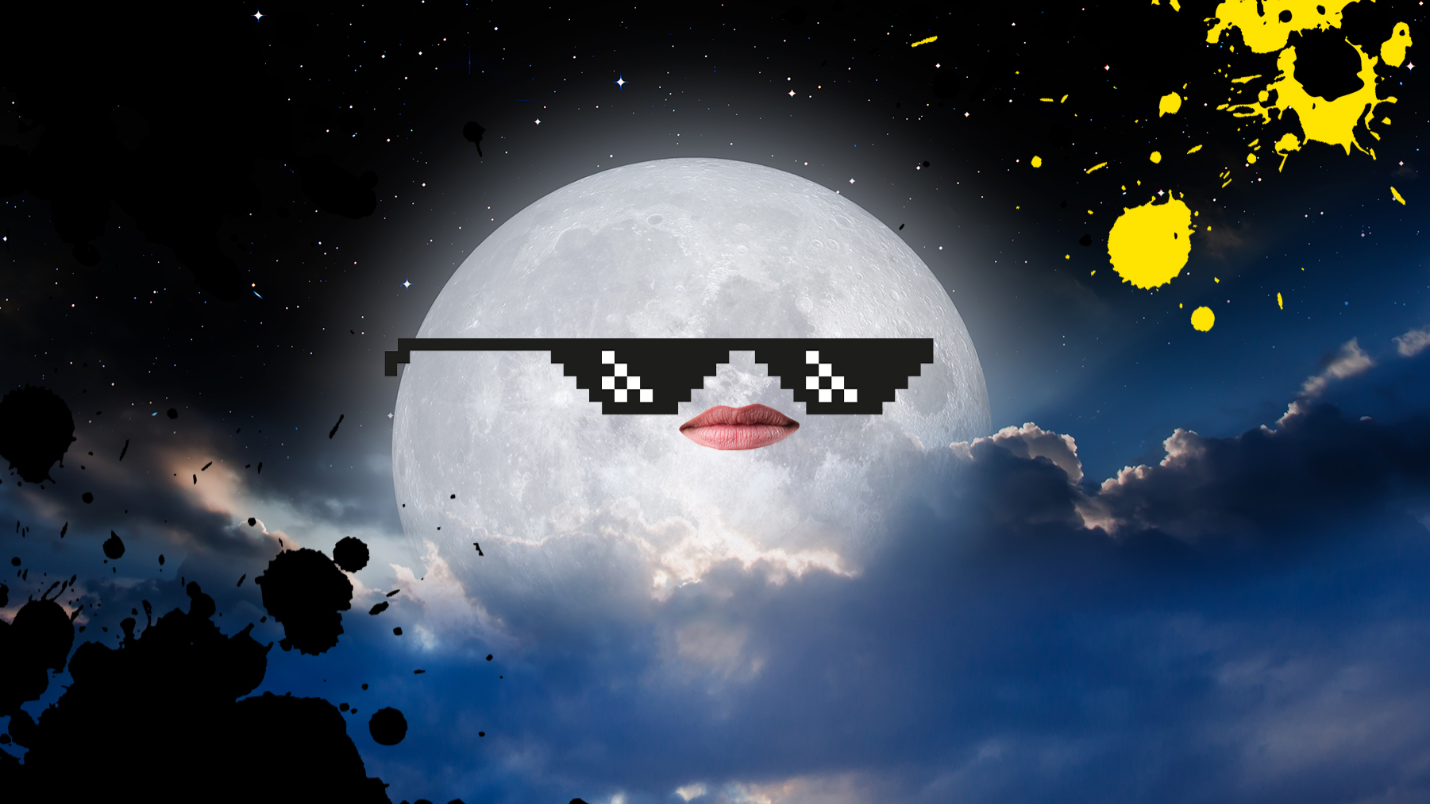100 Useless and Pointless Facts You Should Know!
Ready for some unutterably USELESS information? Then read on and get your fill of foolishness with these funny featherbrained facts!
Here at Beano HQ, we love facts. We'd have them on toast if it was possible or in a bowl with a splash of milk. While these 100 facts might be seen as useless and pointless, there's no denying that they're fun and interesting – that's more important. We've got animal facts, geography facts, and even a fact about shoelaces. Amaze your friends at break time with these snippets of trivia!
ANIMAL FACTS!
1. Cat's can't move their jaw to the sides
Just up and down. Which is enough to eat their food really quickly and ask for a bit more. We're sure it doesn't impact their easy lives too much.
2. These fish form queues when moving through gaps
When neon tetra fish encounter a narrow gap on their travels, they form a line so they can pass through without causing a blockage.
3. Snails have teeth
Scientists say that these fancy slugs have up to 12,000 teeth. But they're not like human teeth – that would be weird and horrifying – but rather microscopic bumps called radula. Phew!
4. Cats can make almost 100 vocal sounds
Anyone who has a pet cat will know they're almost exclusively to demand food, even when they've just eaten.
5. All porcupines can float
While porcupines use their quills as a way of defending themselves, they're also handy as a buoyancy aid. The quills have a little air pocket inside, which helps them bob around on the water. They're also good swimmers, too!
6. A sloth's fart doesn't stink!
The sloth’s gut produce methane but instead of being released out of the bum in the usual humorous, stinky way, the methane is absorbed into the blood. So there's absolutely no point in blaming a bad smell on these slow-moving mammals. They could let off all they want and you'd be none the wiser!
7. A square mile of earth can be home to approximately 32,000 worms
It's like a muddy city under the grass if you think about it. Worms do an important job when they move around, as they loosen the soil and help it get oxygen. Thanks, worms!
8. King Charles III owns every swan in the United Kingdom – sort of
These often grumpy birds are the property of the monarch. People often assume it's all swans but it's in fact unmarked mute swans which King Charles III can lay claim to. It's a tradition that goes back to the 12th century as they were seen as food fit for royalty.
9. Flamingos can only eat with their heads upside down
These tall pink characters use their tongue as a sieve to catch food by flipping their heads about. The flamingo’s tongue helps pump the food-filled water in and out of their mouths about three times a second. This technique is called filter feeding!
10. There are 32 muscles in a cat’s ear
This feature is what allows cats to swivel and rotate their ears so that they can pinpoint the source of a noise. But what's more incredible is that they can move each ear independently and rotate them 180 degrees!
11. The chicken and the ostrich are the closest living relatives of the Tyrannosaurus rex
In 2003 scientists used collagen in ancient dinosaur remains to figure this out. They had suspected the dino-ness of birds for a long time, and finally here was actual evidence. Before this discovery, many experts believed that dinosaurs were giant reptiles, but it turns out they were basically massive chickens. A thought that makes Jurassic Park a little less scary... or maybe even more scary?
12. People used to believe that kissing a donkey could relieve a toothache
Yep, that’s right! People have always done rather odd things to prevent toothache. For example, the Ancient Egyptians scrubbed their teeth with a powder made from ox hooves and eggshells. But weirder still, during the Middle Ages in Germany, they thought a cure for a toothache was kissing a donkey. Even if it did something for your toothache, it certainly won't do anything for your breath.
13. An ostrich’s eye is bigger than its brain
An ostrich is the biggest bird in the world, and it has the largest eyes in the whole animal kingdom – that's right, its eyes are bigger than its brain. Having said that, its brain isn't that big! An ostrich's eyes are about 2 inches or 5 centimetres in diameter, which is around the size of a ping pong ball.
14. Rabbits can’t vomit
Welcome to the vomit void. Bunny rabbits are very hygienic creatures who self-groom in much the same way that a cat does. But the rabbit’s digestive system does not move in reverse, meaning rabbits cannot bring up hairballs like a cat can. So basically if you're banking on a burst of bunny barf, don't hold your breath.
15. The unicorn is the national animal of Scotland
The unicorn was a symbol of innocence and purity in Celtic mythology. However, it was also associated with power and masculinity. Romantic stories about chivalry and dominance associated with the unicorn may be why it was chosen as Scotland's national animal... or maybe they were just having a laugh. Either way, we approve!
16. Some sharks can live for up to five centuries
Greenland sharks, in particular, can live a long time. They only grow a centimetre a year, but it is believed they may live for up to 500 years – as long as they don't have an accident!
17. Mail was once delivered by 37 cats in Belgium
These domestic cats were trained to deliver mail in the city of Liège. Waterproof bags containing letters were tied around their necks and then were driven out into the countryside, miles away from their homes and let go. They all made it home within 24 hours. Ultimately the scheme was abandoned as it was easier to deliver the mail yourself than rely on a cat!
18. Bees sometimes sting other bees
They don't mean to, but sometimes when they try to defend their nests from intruders, they accidentally sting other bees. Ouch!
19. There are more chickens in England than people
There are around 982 million chickens eaten each year in the U.K. by 66 million people... this statistic means that should the chickens decide to take over the country, (a la Jurassic Park) we would be massively outnumbered. The threat is real, people. Come the chicken uprising don't say we didn't warn you.
20. Bears don’t poo during hibernation
They also don't eat, drink or wee! So once they are all snug in their cave, bears form a kind of plug for their bottom made out of their bedding, which is pretty gross but seems to work!
21. Crows hold grudges
A 2011 study revealed crows can remember the human faces of those who capture them. According to another study, ravens, including crows, jays and magpies, can 'hold grudges' for up to two years. So make sure you don't upset a crow, because they just won't let it lie!
22. Tigers have striped skin, not just striped fur
A tiger's skin still displays its stripes if you shave away the fur. Leopards are the same way with their spots. So if you shaved a tiger, it would still be a) stripey and b) miffed.
23. A group of jellyfish is called a smack
Of course it is. There are loads of other excellent collective nouns for groups of animals, for example - a cauldron of bats, a coalition of cheetahs, and a rhumba of rattlesnakes. If you're surrounded by a rattlesnake rhumba you might say your rhumba's up. (Although you'd probably forego wordplay and just scream your head off.)
24. Beaver bum gunk is sometimes used as a vanilla flavouring
A chemical compound used in vanilla flavouring and scents comes from the anal glands of beavers. So the vanilla scent could be due to the animal's diet of bark and leaves. Whatever the reason, chances are you've encountered said bottom debris. Enjoy.
25. The wood frog can hold its pee for up to eight months
They tend to do this in winter – because it’s too cold to pee? No, because they recycle the nitrogen in their own wee to keep themselves warm from the inside out!
26.Due to a genetic defect, cats can’t taste sweet things
This is because they are missing a taste receptor gene that allows their brains to recognise sweet tastes. No wonder they're often grumpy!
27. A giraffe can go longer without water than a camel can
Giraffes can go up to 3 weeks without a drink. When they do drink, they've been known to down 12 gallons in one sitting to keep themselves going. In comparison, a camel can go about 2 weeks.
28. A group of hippos is called a bloat
The word 'hippopotamus means 'river horse' and is often shortened to 'hippo'. Even though hippos have numerous collective nouns, 'bloat' is the most common. They are also sometimes a crash, herd, pod or dale.
LANGUAGE FACTS!
29. No word in the English language rhymes with 'month'
Other words with no rhyme include purple, silver, pint, ninth, wolf, opus, dangerous and marathon.
30. The word 'hipster' goes back to the 1930s
The earliest uses of hipster are often mixed with a very similar word, the hipster. Hipster began appearing in the late 1930s and primarily referred to a knowledgeable person or interested in jazz.
31. "Go!" is the shortest sentence in English
When there's no time to mess around, this sentence will help you out and save vital seconds.
32. Pinocchio means 'pine eye' in Italian
This story about a wooden marionette who becomes a boy was written by Carlo Collodi. His name literally translates into 'pine eye' – pino + occhio!
33. The Australian government once banned the word "mate" for a day
In 2005 the word ‘mate’ was banned in the Australian Federal Parliament. The ban was revoked within 24 hours after people said it was ridiculous.
34. 'Alektorophobia' is a fear of chickens
The term comes from the Greek words ‘alektor’, which means rooster, and ‘phobos’, which means fear. It's a particular phobia and can be pretty extreme! And no wonder - we certainly won't be watching Jurassic Park in the same way again (see fact #3).
35. There are only four words in the English language which end in “dous”: tremendous, horrendous, stupendous, and hazardous
Those words include; tremendous, horrendous, stupendous, and hazardous. There's also the specialist zoological term apodous, which means 'without feet'.
36. Dr Seuss invented the word ‘nerd’
Dr Seuss first used the word ‘nerd’ (which he meant as a ‘comically unpleasant creature’) in a book called If I Ran To The Zoo in 1950. Little kids reading Dr Seuss loved the word and passed it on to their older siblings. After that, the meaning of the word began to change to mean someone who wasn't very cool... then changed further to loosely mean someone with an obsessive interest in something - either way, who doesn't love a nerd?
37. A blob of toothpaste is called a nurdle
Nobody is quite sure where the word 'nurdle' originated. A fact as useless as the word.
38. The name Jeep comes from an army phrase
The US army are said to have coined the word as a shortened version of 'General (or Government) Purpose' – GP. It's quicker to say, no doubt about that!
39. ‘Hippopotomonstrosesquippedaliophobia' is a fear of long words
Well, that's easy for you to say.
GEOGRAPHY FACTS!
40. Egypt doesn't have the most pyramids
That honour goes to Sudan, who have around 255 pyramids compared to Egypt's 138!
41. The Philippines is made of over 7000 islands
There around 7,641 islands give or take (due to rising water levels), but most of them are uninhabited. Luzon, Visayas, and Mindanao are the three main islands!
42. The world's shortest commercial flight in the world is in Scotland
Don't bother getting a magazine and some snacks for the flight from Westray to Papa Westray in northern Scotland. It takes just two minutes!
43. Japan has lots of vending machines
Research has shown that there's a vending machine for every 40 people in Japan, which works out at 3,127,500. That's a lot.
44. Nepal doesn't have a rectangular flag
This is the only country to not have a rectangular flag and it was adopted in 1962. The colour red symbolises Nepal's national flower, the rhododendron, while the blue border means peace.
45. Antarctica’s international telephone dialling code is +672
If you need to call a penguin to wish them a happy birthday, dial +672 before entering their home phone number.
46. The Eiffel Tower gets taller in the summer!
Due to a process what boffins would call 'thermal expansion' the Paris landmark gains a few centimetres in the hot weather. The heat from the sun makes the metals used to stretch ever so slightly, but in the winter, it returns to its original height. Vive la science!
47. There's a Lego bridge in Germany!
In Wuppertal, there is an old bridge which has been painted to look as though it's made out of Lego bricks! The Lego-Brücke, as it's known, was repainted by the street artist Martin Heuwold and his team and looks amazing! We don't think an actual Lego bridge would take the weight of lots of cars.
48. The longest place name belongs to a hill in New Zealand
Taumatawhakatangihangaoauauotameteaturipukakapikimaungahoronukupokaiwhenuakitanatahu translates into English as; 'the place where Tamatea, the man with the big knees, who slid, climbed and swallowed mountains, known as 'land eater’, played his flute to his loved one.’
Without doubt our favourite hill that's named after a man with large knees.
49. There is a town in Nebraska with a population of one
According to a recent census, Monowi is the only place in the USA with just one resident. She is her own clerk, mayor, librarian, treasurer, librarian and bartender and the only person left in the USA's tiniest town.
RANDOM FACTS!
50. Buzz Lightyear almost had a different name
That's right! The Toy Story hero was almost called Lunar Larry until the people at Pixar decided it was "too wacky" and opted for Buzz Lightyear instead.
51. Kleenex tissues were originally made for gas masks
During World War 1, there was a shortage of cotton so a company called Kimberly-Clark created a special type of material to put in gas masks. After the war, it was remade into the tissue we know today!
52. It's rude to blow your nose in Japan
It is considered very bad manners to blow your nose in public, so it's best to go to the loo if you have a cold or pollen allergy. Then you honk away without upsetting anyone.
53. The bowler hat was designed for protection
This hat was originally intended to protect people's heads from branches when they rode on horses. It's called a Bowler hat because the prototype was designed by Thomas Bowler in the mid 1800s. And now it's only worn by the fanciest of people.
54. A man called Ray sent the first ever email
It's hard to imagine a world without email, especially if you're an adult who enjoys getting spam. The first email was sent by a computer technician called Ray Tomlinson in 1971. He whacked QWERTYUIOP into the body of the message and hit send to himself, just to check. He also had the idea of using '@' in people's addresses. Thanks, Ray!
55. Lightning strikes the earth around 8 million times a day!
Did you know there are more than 8 million lightning strikes across the world every day? Don't worry, it's extremely unlikely you'll be struck by lightning - the odds are less than one in a million. Just make sure you're indoors if the sky starts to light up!
56. A dartboard is made out of plants
Inexpensive dartboards tend to be made out of cork, but usually, they're made out of fibres from a sisal plant. These plants are found in Mexico and the fibres look a bit like horsehair!
57. Neil Armstrong's left foot touched the moon first
Neil Armstrong, Buzz Aldrin and Michael Collins made this historic lunar landing in 1969. Neil was first out of the lunar pod and it was noted that his left foot touched the surface of the moon first!
58. Ghosts make an appearance in five Shakespearean plays
William Shakespeare loved adding ghosts into his stories and probably scared the people who attended his plays. Keep your eye out for some ghastly apparitions in Hamlet, Macbeth, Julius Caesar, Richard III and Cymbeline. Wooh!
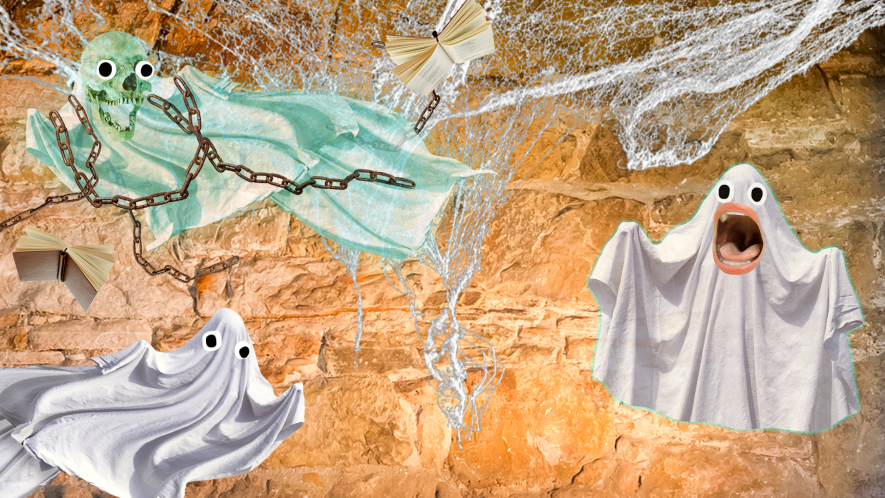
59. Is it your birthday? You share it with about 18 million other people!
There's an estimated 8 billion on earth which means a lot of birthday cards, cake and a fair number of balloons too.
60. A rain drop falls up to 25 miles per hour
While rain usually falls at a speed of 15 miles per hour, in storms, they can exceed that by around 10 miles! That's why it's good to carry an umbrella, especially in Britain (at any time of year).
61. There are MANY moves in the first four moves of a chess game
There are 318,979,564,000 possible combinations in the first four moves of chess. If you want to get an advantage over your opponent, get learning them ALL now! Warning: this may take a while.
62. A small lump of gold can go a long way
A small piece of gold, around the size of a matchbox, can theoretically hammered flat and there'd be enough to cover a tennis court. Some players prefer clay, grass or concrete, but we've yet to see a Grand Slam match on a golden court. It'd be so fancy!
63.The first cashpoint was made available in England in 1967
Barclays in Enfield was the first bank branch to introduce a cashpoint on June 27, 1967. English comedy actor Reg Varney attended the launch. There are now an estimated 70,000 ATMs in the UK. ATM stands for automated teller machine.
64. American Airlines saved a fortune by removing ONE olive from their salads
In the 1980s, American Airlines realised they could save $40,000 a year if they removed just one olive from each of their salads which were served during flights. They realised this when it was noted that some passengers declined the salty grape-like treat.
FOOD FACTS!
65. Caesar Salad was invented in Mexico
Caesar salad, a tasty salad made up of lettuce, croutons and all kinds of yummy dressing, wasn't named after the Roman emperor. It was named after its inventor, restaurateur Caesar Cardini who had a restaurant in Tijuana and threw some stuff together for some hungry customers.
66. Honey can last for thousands of years
Archaeologists have found pots of honey in ancient Egyptian tombs that are over 3,000 years old and still perfectly edible. Be sure to thank a bee for their delicious treat!
67. 350 slices of pizza are eaten in the USA every second!
The average American eats about 46 slices of pizza a year. If you're thinking about having a slice of pizza, remember to choose a healthy topping if you can!
68.Ketchup was used as medicine
In the 1830s, ketchup was used for its 'medicinal' properties and was thought to help people with diarrheoa and stomach ache. Now it's dumped on chips. Ketchup, that is.
69. Bananas are radioactive
Bananas contain potassium, and one of potassium's variants is radioactive. They only have a very tiny bit though. For a lethal dose, you'd have to eat a cargo ship worth. But if you don't like bananas, see if this excuse works next time your parents want you to eat one! If you love bananas, don't worry, you can still eat them!
70. You can buy eel flavoured ice cream in Japan
And that’s not even the weirdest flavour they have! Fancy some horse meat flavoured ice cream? No probs. Chicken? here's a tub, fill your boots (best place for it). Garlic?! Soy Sauce?! You're in luck. Welcome to Japan!
71. Rhubarb can spring up so fast that you can actually hear it grow
The buds of the plant cracking open make the sound, which is a sort of creaking and groaning. During the growing season, some people say it sounds a bit like the rhubarb is singing! We don't know what song the rhubarb is singing but our guess is 'Let's Get Ready to Crumble'.
HISTORY FACTS!
72. The Battle of Hastings took place miles away
Battle is almost seven miles away from Hastings. It's said that William the Conquerer set up his base in the seaside town before moving his armies north-west to the East Sussex town. We can't imagine an army of French soldiers queuing for fish and chips and going to the amusement arcades.
73. King Louis XIX ruled France for less than an hour
This French king is in the Guinness Book of Records for being the shortest-reigning monarch. King Louis – Louis Antoine, Duke of Angoulême – was on the throne for about 20 minutes during the July Revolution in 1830.
74. Thousands of rabbits once attacked Napoleon
Eight years before Waterloo (another humiliating defeat for Napoleon), he was beaten by a barrage of bunnies. He was signing a treaty when the rabbits (who had been captured) were released to be hunted. Instead of running away, they attacked their would-be hunters, including Napoleon, who was forced to flee.
75. One King of England made a law that everyone had to be in bed by 8pm
Alfred The Great even introduced a curfew bell rung at 8 o'clock to tell people to go to bed. They had to get their lights out and settle down and stop acting up, it's bedtime. You could be punished if you didn’t go to beddies!
BODY FACTS!
76. Young children grow more during spring
Experts say that this is down to two things: more sunlight, which can help bone growth and more of an abundance of fresh food and outdoor activities as the weather is better. So now you know.
77. Your skeleton is replaced once a decade
Your bone cells regenerate and every 10 years, each cell you have will have been replaced by a new one, meaning you're totally new! Don't worry, it'll be exactly the same as the last one.
78. Humans are full of salt
There's about 200g of salt in the average adult human body. We're like a big cinema snack in shoes. Sodium is important though, as it helps you to retain water, which you need to stay healthy!
79. Humans blink over 6 million times a year
We tend to blink every three or four seconds. We've done the maths and this works out to around 6 million times every year. That's quite a lot.
80. The human heart beats about 100,000 times a day!
That means your ticker will beat around 36,500,000 times in a year. Count them if you don't believe us! Yes, we'll wait.
81. If you open your eyes in a pitch-black room, the colour you'll see is called 'eigengrau'.
‘Eigengrau’ is German for ‘intrinsic grey’, also known as dark light, or brain grey. It is used to describe the uniform dark grey background that many people see in the absence of light. The term dates back to the nineteenth century.
82. Humans are the only animals that blush
Humans are the only species known to blush, but we still don't know why. Charles Darwin called blushing ‘the most peculiar and the most human of all expressions. It can definitely be super embarrassing!
83. Information in your brain can travel faster than a Formula 1 car
The neurons in your brain transfer vital information from cell to cell at 268 miles per hour. Formula 1 cars can reach speeds of up to 220 miles per hour. Both are quite fast, we think you'll agree.
84. It’s impossible to tickle yourself
You can't tickle yourself because when you move a part of your own body, a part of your brain monitors the movement and anticipates the sensations that it will cause. So we humans can't tickle ourselves because what makes tickles ticklish is that they are surprising!
85. Your body contains about 100,000 miles of blood vessels.
A bit gross, but if you took all the blood vessels (including arteries, veins and capillaries) out of an average child and laid them out in one line, the line would stretch over 60,000 miles. An adult's would be closer to 100,000 miles long.
86. The average yawn lasts six seconds
Humans also yawn on average 20 times per day, so in total, that's 120 seconds or 2 whole minutes you spend yawning each day. Yawning is contagious, so even reading this, and thinking about yawning, might make you yawn. (Bet you a zillion quid you just yawned. Are we right?)
87. You can sneeze faster than a cheetah can run
We sneeze at around 100 miles per hour, faster than cheetahs run and four-and-a-half times faster than Usain Bolt's world record. You might think that's impressive, but it's SNOT.
88. You can't lick your own elbow
Okay, so there are a few people who MIGHT be able to lick their own elbows, but it's very rare, and you'd need to have short arms. So why not give it a go and see if you can do it?
89. Barbie's full name is Barbara Millicent Roberts.
In some novels published in the 1960s, Barbie’s parents' names were given as George and Margaret Roberts, and apparently, they all lived in the fictional town of Willows, Wisconsin. Don't be fooled by the improbable proportions that she got - She's just Barbie from the Willows.
90. The moon has moonquakes
Shallow moonquakes are caused when the moon's crust slips and cracks due to the gradual shrinking of the moon when it cools. Meteors can also cause quakes when they crash into the surface of the moon.
91. Slinkies are 82 feet long
Fully stretched out, Slinkies can reach up to 82 feet – that’s as long as 14 average-sized people, or nearly twice the height of the Hollywood sign, or a just a touch longer than a cricket pitch.
92. Astronauts say that space smells like hot meat
In a video, NASA astronaut Tony Antonelli said that space smells "strong and unique". He said he has never smelled anything like it on Earth. Others have described the smell as “seared steak and raspberries”, smokey and bitter. Mmm, delicious outer space!
93. Alfred Hitchcock didn’t have a bellybutton
The famous director of The Birds and Rear Window was born with one, but after surgery, it vanished after he was sewn back up!
94. Water makes different pouring sounds depending on its temperature
Hot water produces a higher-pitched sound when poured because the energised molecules are moving around more rapidly. Put another way, hot and cold water have a different ‘thickness’.
95. The little plastic tube at the end of a shoelace is called an aglet
Aglets are usually plastic or metal and they are designed to stop your shoelaces from fraying. That's all there is to tell you about that. We told you the facts were mostly pointless, don't blame us.
96. Tornadoes can make it ‘rain’ fish
This phenomenon usually happens when swirling whirlwinds over shallow water develop into waterspouts that suck up water and the things living in it, like frogs, eels and fish. The creatures are carried long distances by clouds, and then drop to the ground like a mic.
97. The King of Hearts is the only king in a deck of cards without a moustache
This difference wasn't a stylistic decision - he originally had one, but it got lost because of a printing error from the original design. Now it's just a thing. Check it out! The King of Hearts' top lip is always as smooth as a baby's bottom. The state of his bottom however, we can only speculate.
SPORT FACTS!
98. The chances of getting a hole-in-one at golf aren't that small!
If you're a fan of golf, then you'll know getting a hole-in-one is the most exciting thing ever! The chances of getting on are around 12,500 to 1. Tiger Woods got his first aged 8!
99. Lionel Messi's first contract was on a paper napkin!
When he was just 12-years-old, Messi played in a trial for Barcelona. Carles Rexach, who worked for the team, thought he was going to be a star and got him to sign a contract on a paper napkin to make sure he'd be part of the team. It's now in a frame, which belongs to football agent Horacio Gaggioli. Must be worth a few quid, at least!
100. In Major League Baseball, the bases are exactly 90 feet apart!
This rule has been in place since 1877 and was created by the National League. The straightest line a batter would run is called the 'baseline', but players tend to run in a curved direction in order to make it to the fourth base without losing their pace. It's all very exciting!



